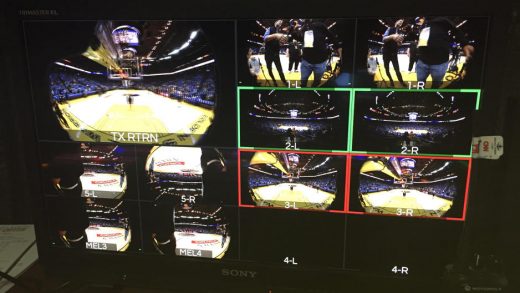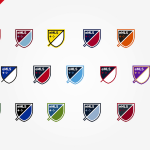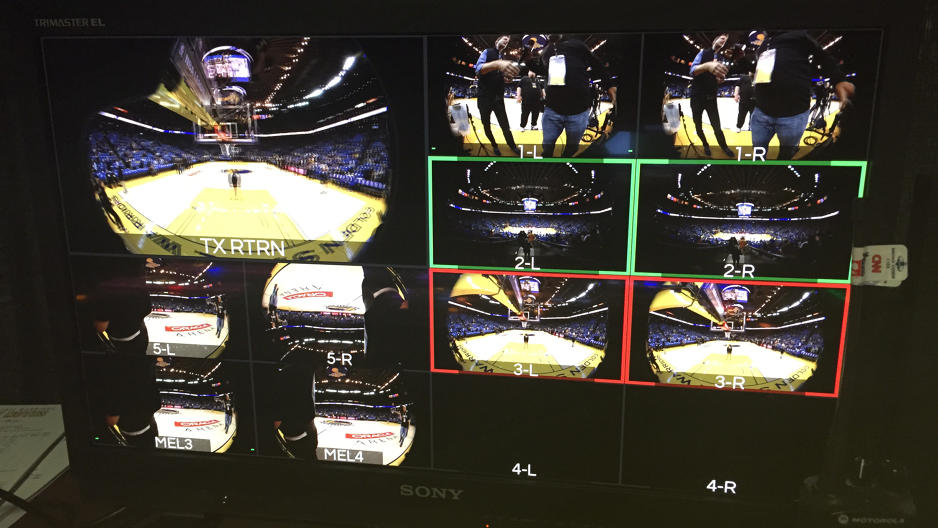The NBA Will Broadcast Live Games In VR All Season Long
From just an experiment one year to full-fledged product the next—the NBA is all-in on virtual reality.
Last year, the league broadcast one of the first-ever live VR streams, the then-defending champion Golden State Warriors’ opening night game against the New Orleans Pelicans. It, along with other games streamed live last year in VR, was a test. Today, NBA Digital announced it will live-stream a game a week all season, formalizing its commitment to the technology. Those games, starting with the Sacramento Kings against the San Antonio Spurs on October 27, will be made available for free to anyone who subscribes to its League Pass service.
As a result of a multiyear partnership with leading virtual reality production company NextVR, the league will broadcast one game a week, featuring each of its 30 teams at least once over the course of the six-month season. The broadcasts will feature multiple VR camera views, replays, and graphics, and dedicated commentators and analysts who will aim to help fans have the best-possible experience watching a basketball game in VR.
NBA Digital will announce the schedule of games next week. It isn’t saying yet whether it will extend the VR broadcasts into the playoffs next spring.
“We think this is the biggest commitment of virtual reality content” by an entertainment company, Jeff Marsilio, NBA Digital’s vice president of global media distribution, told Fast Company, “outside video games.”
Marsilio said the NBA first began playing with VR in 2014, and by the fall of 2015 had moved on to its stream of the Warriors’ opener. But the league knows that being a leader in virtual reality means diving in even deeper.
“If we’re going to move innovation forward,” he said, “we need to [do more] and make sure that every time we do this, it’s getting better.”
During last year’s Warriors broadcast, NextVR shot video with a single camera installed courtside. Now, said Brad Allen, NextVR’s executive chairman, there will be between four and six cameras set up at each of the games. Along with on each side of the court, there will also be one providing a bird’s-eye view.
Plus, Allen said, “everybody loves having cameras in the stanchions right below the backboard, so you can see the players coming down the court, and Steph Curry’s shooting a three-pointer, or somebody’s making a dunk.”
In the early going, viewers will need a Samsung Gear VR to view the live broadcasts. Marsilio said the plan over time is to expand to other virtual reality platforms. Google’s Daydream, which it will launch next month, is “absolutely one of the platforms I do expect us to be on,” he said.
Dedicated commentary
In its previous public experiments with VR, the NBA has relied on traditional commentary from its TV broadcasts. But the league is aware that watching a game in virtual reality is different. Fans may need some help knowing where to look, or to have their attention diverted to something particularly worth noting.
“It helps,” Marsilio said, “to have someone dedicated to the VR broadcast [who can] introduce different elements. . . . We’ve found people will watch a live stream without these elements, but that the time [they’ll watch] extends when you provide these contextual elements.”
He did note that while professional basketball commentators will be the ones providing color and analysis during the VR live streams, it’s going to be a learning process for everybody since no one has really done this at any kind of scale before.
NextVR, which has broadcast everything from presidential debates to concerts and many sporting events in VR, has included dedicated live commentary in some of its previous sports broadcasts, like a German soccer match, but hasn’t done it repeatedly and on any kind of regular schedule, Allen said.
The Southern California company has been on a hiring binge recently thanks to having raised $116 million in venture capital. It currently has 70 employees, Allen said, and now has its very first VR production truck that will “roll up” to event venues much like those for traditional TV.
“Hopefully we’re solving one of the big questions about VR,” Allen said, “which is [whether there’s] enough content, and compelling content, out there [and] to know there’s a regularly scheduled game once a week.”
[This story has been updated to reflect that NextVR incorrectly said viewers could change their camera view.]
Fast Company , Read Full Story
(42)














